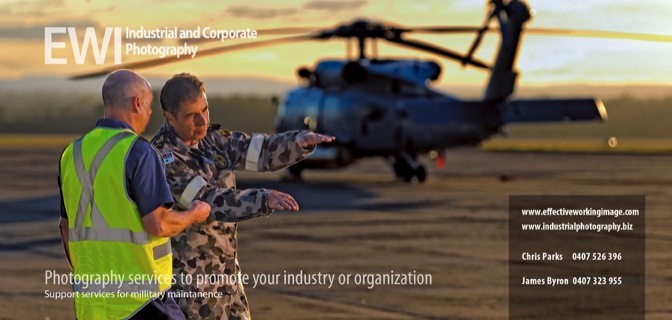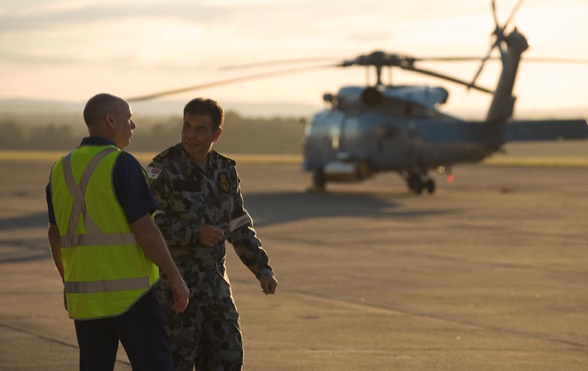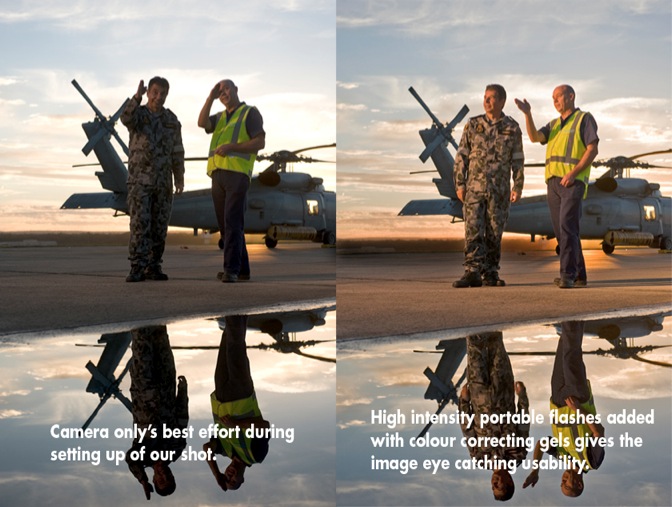High speed Sync
Industrial photography outside the normal 9 - 5
19/03/14 13:03 Filed in: Industrial Photography | Corporate Photography | Annual Report Photography | High speed Snyc flash Photography | Professional Photography Australia

Photographing with early morning and late afternoon light was part of our plan for a series of images for our client, who offers maintenance support in the aviation, aerospace and military sectors. It means longer shooting days for us but allows for far more interesting results visually. Any business looking for photography with impact should allow for their photographer to have this option. Any photographer of professional standing should revel in the opportunity. The extra organising and time to have someone on hand will prove extremely worthwhile.
Industrial and architectural photographers use these “ Magic times of day “ when ever possible to add colour, sculptural lighting and richness to their shots. These times of day can also help separate the prime subject matter from less desirable background items. It also can make the bland exciting.
But it does often add complication to the actual shooting of the shot. With main foreground subject matter silhouetted against bright skies or even the setting Sun, shadows become a major problem. Light levels change fast, dropping rapidly as the Sun goes lower in the sky. Any clouds can further drop light levels to a quarter and less. Or raise them by the same amounts in moments.
However when treated properly with additional lighting, capable of matching if not over powering the daylight, the results can be truly arresting. Just what any business needs to standout from the competition.
Where the art comes in is in not overdoing the additional lighting so much that the final image looks totally unbelievable. Constant adjusting of both daylight and additional lighting is required as the light quickly changes. Careful placement of lights to create believable effects is critical.
While most higher end amateur cameras can add some light to compensate for shadow areas. They do so from the camera’s angle of view, which often clashes with the angle of the natural light. They can light only over very short distances. And they take much of the exposure controls for the background light conditions out of your control. Creating a fill light which is total inconsistent in colour and direction with the rest of the image.

Above is an early shot to get rough positioning prior to adding our additional lighting.
And a direct comparison with and without our specially balanced and Geld additional lighting.

Working quickly as a team Chris & James where able to set up and shoot additional well lit options in the fast fading light.